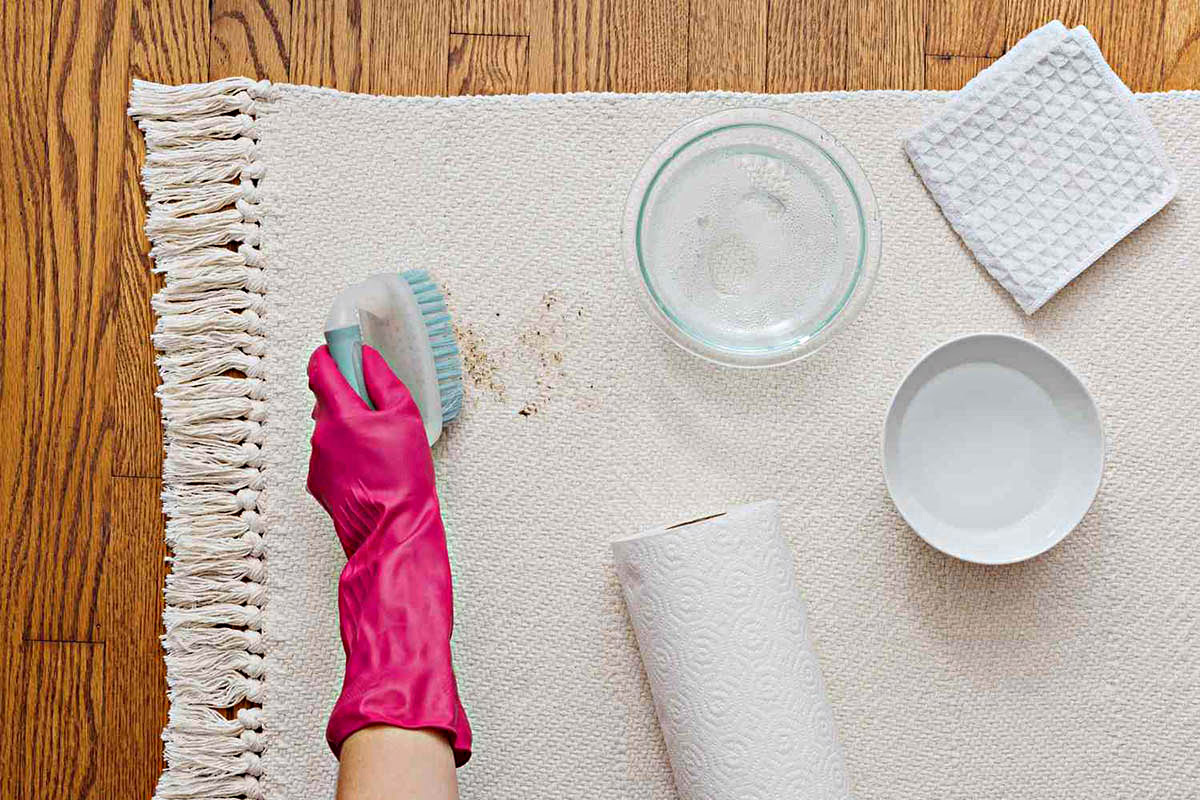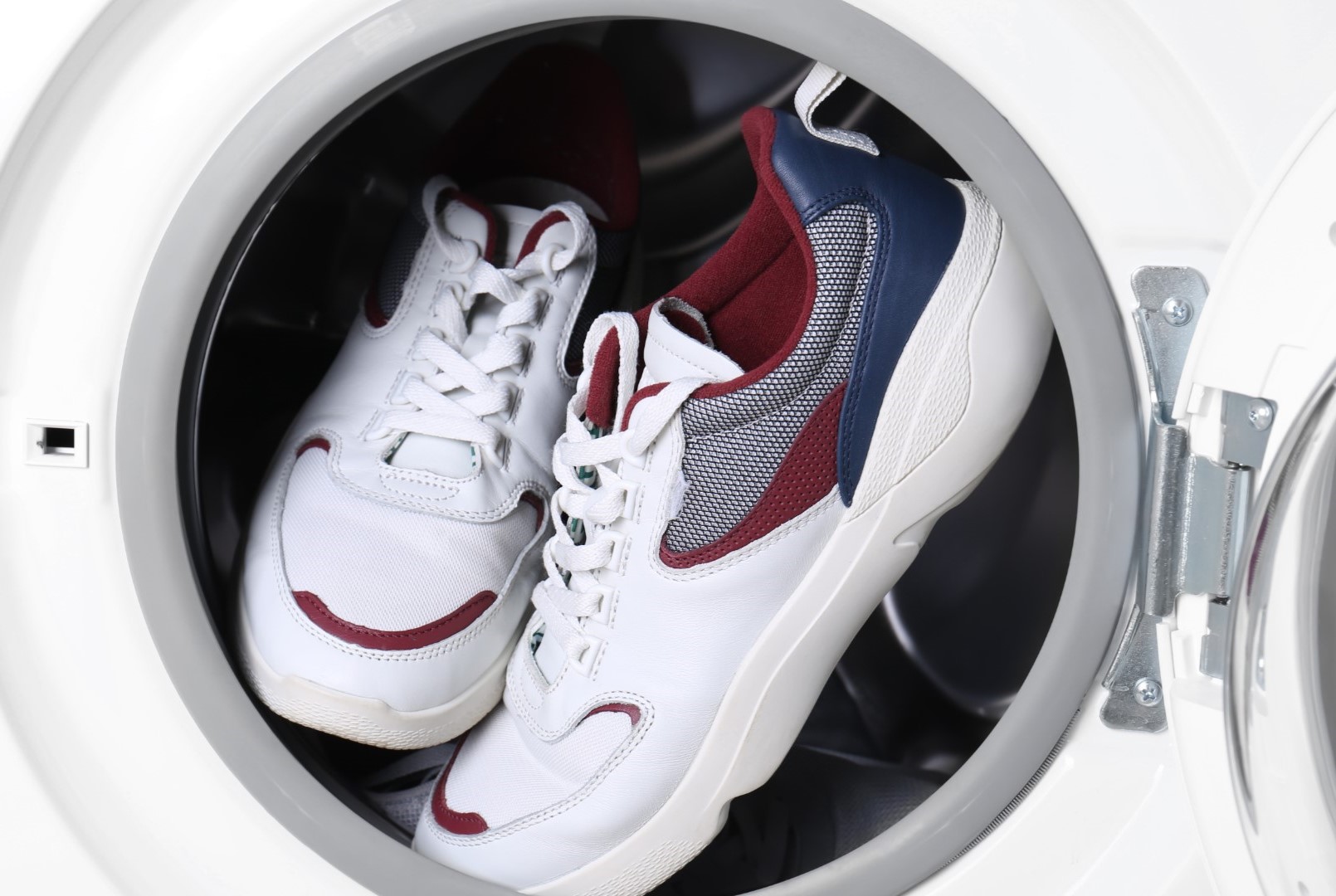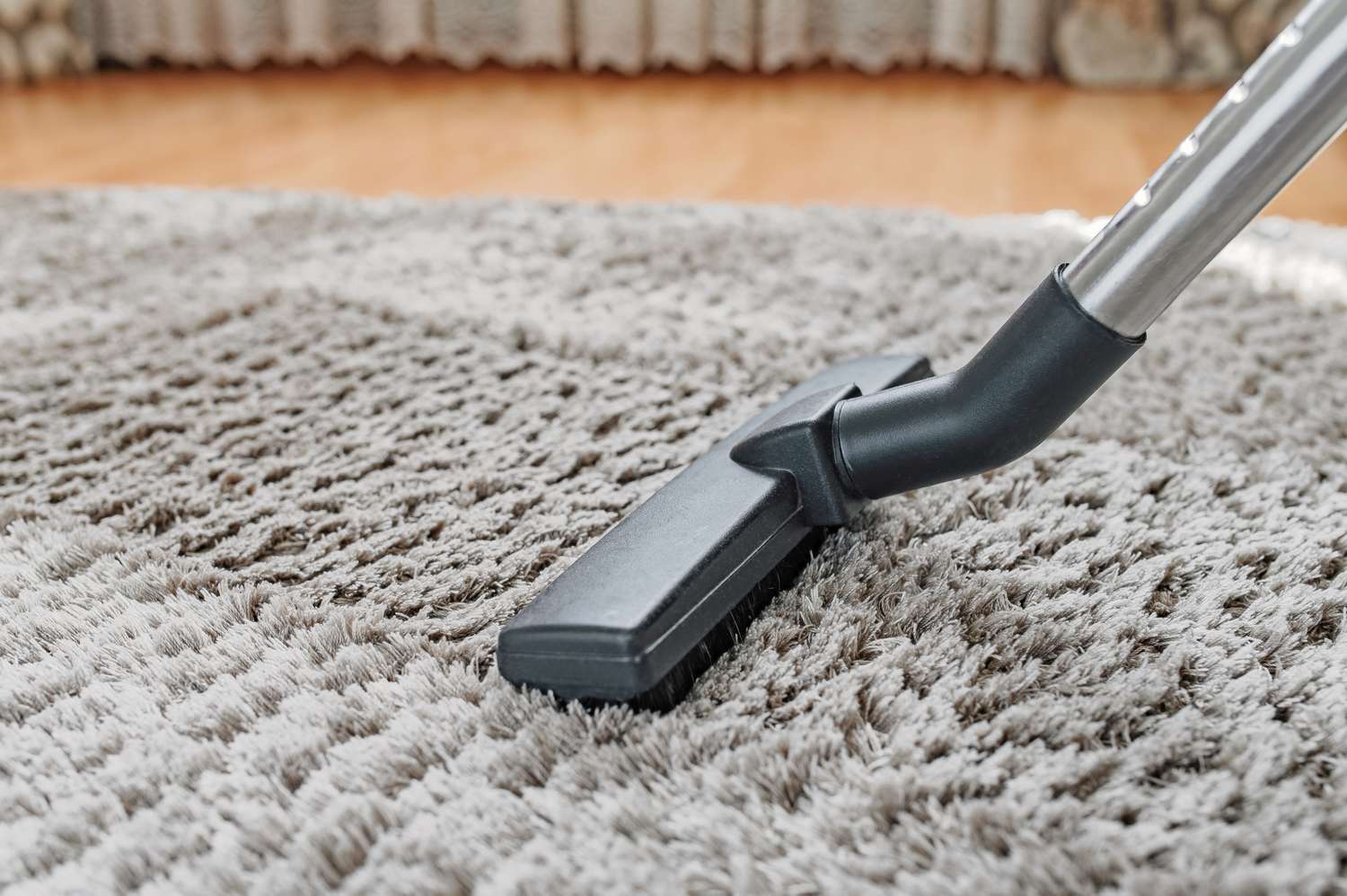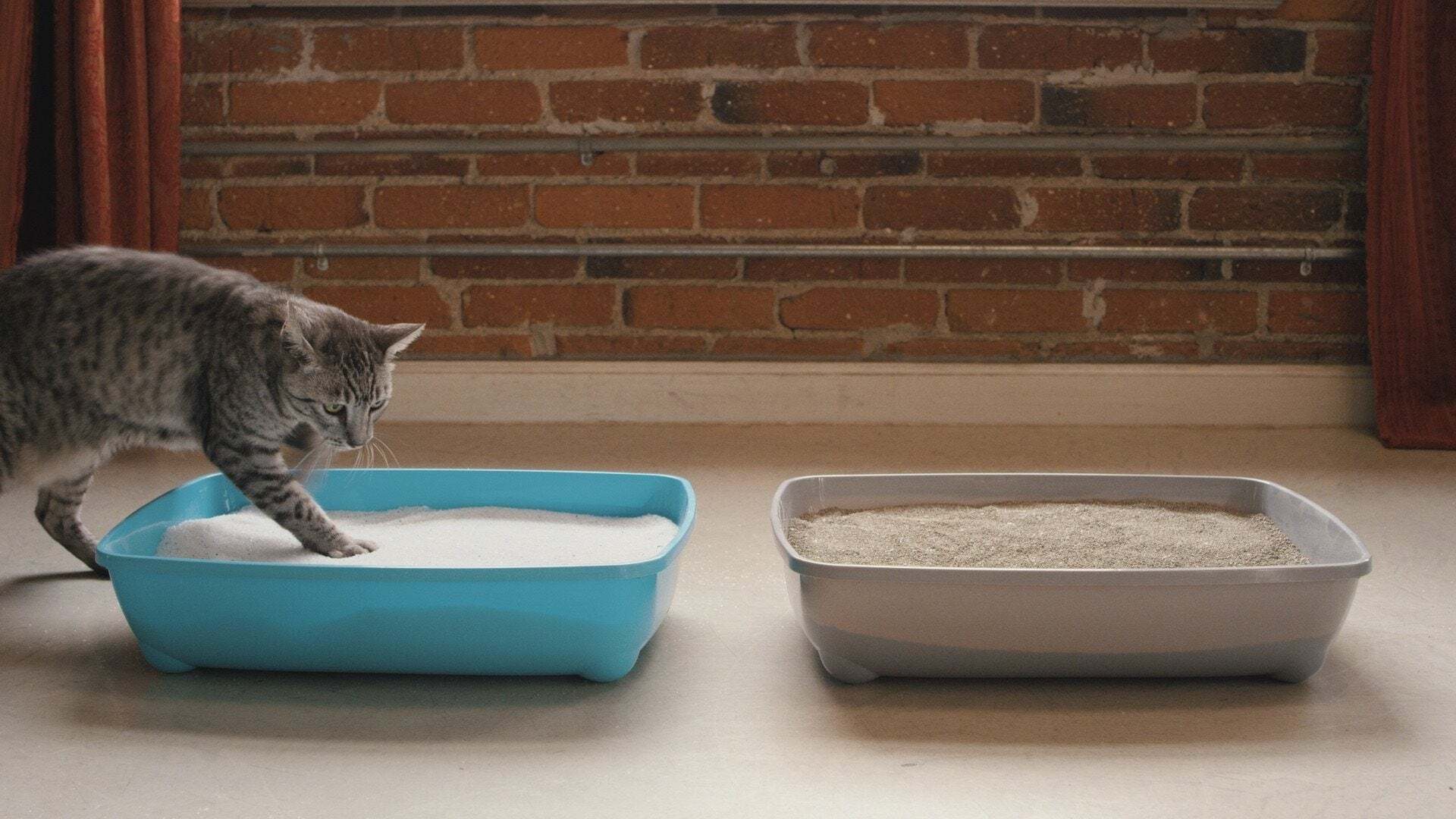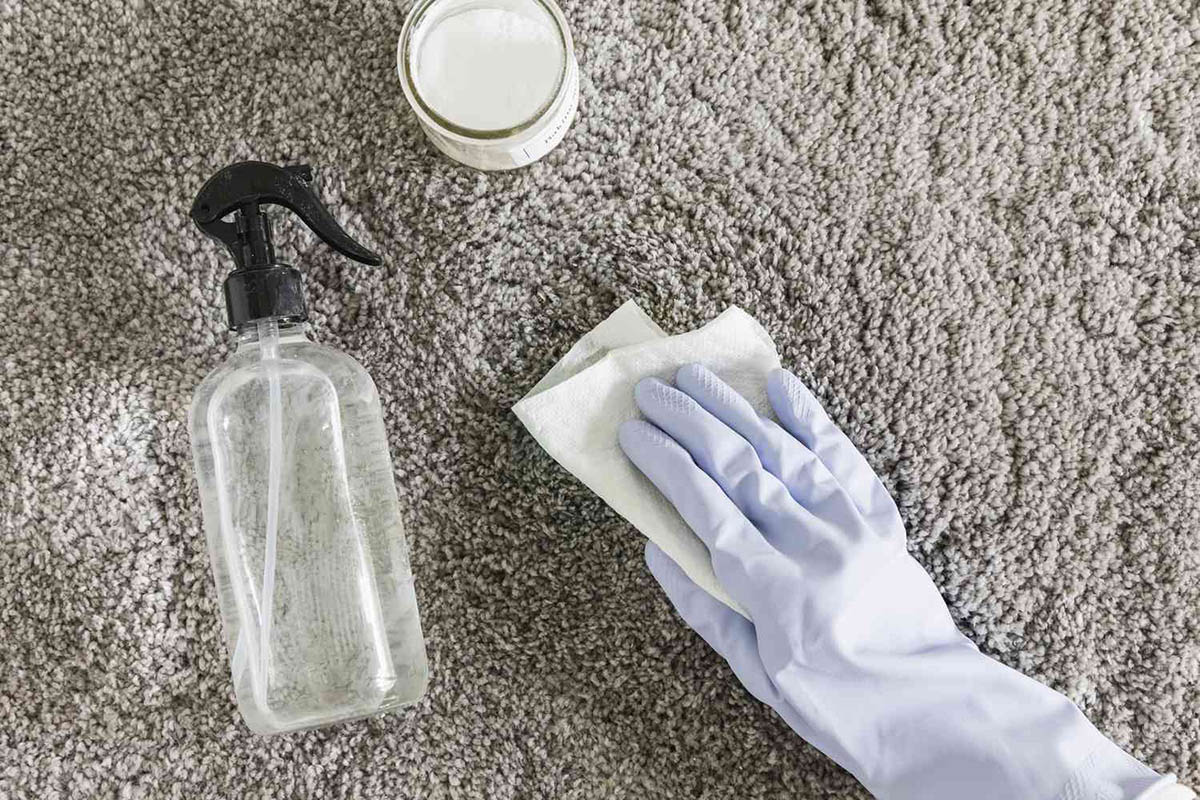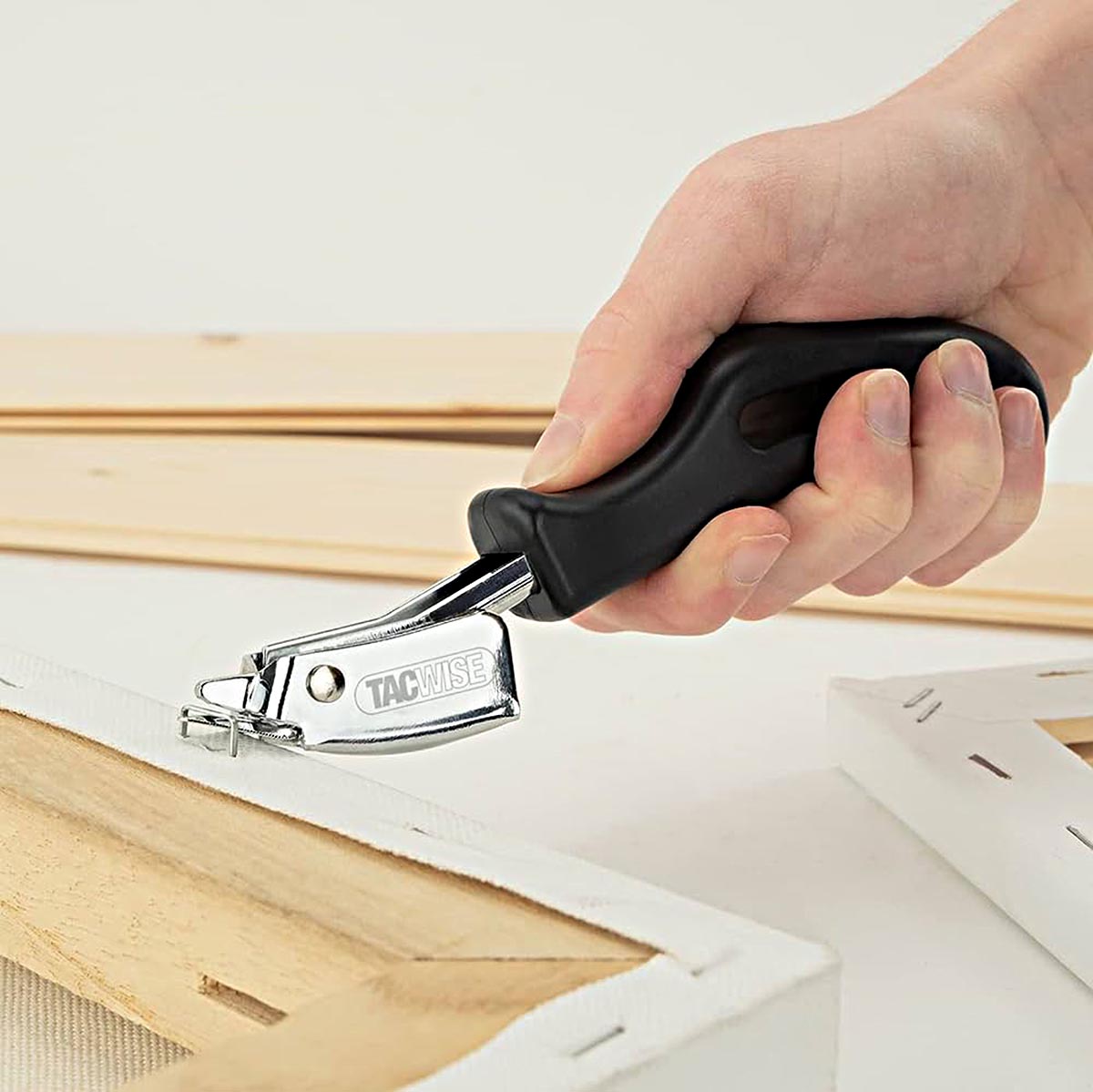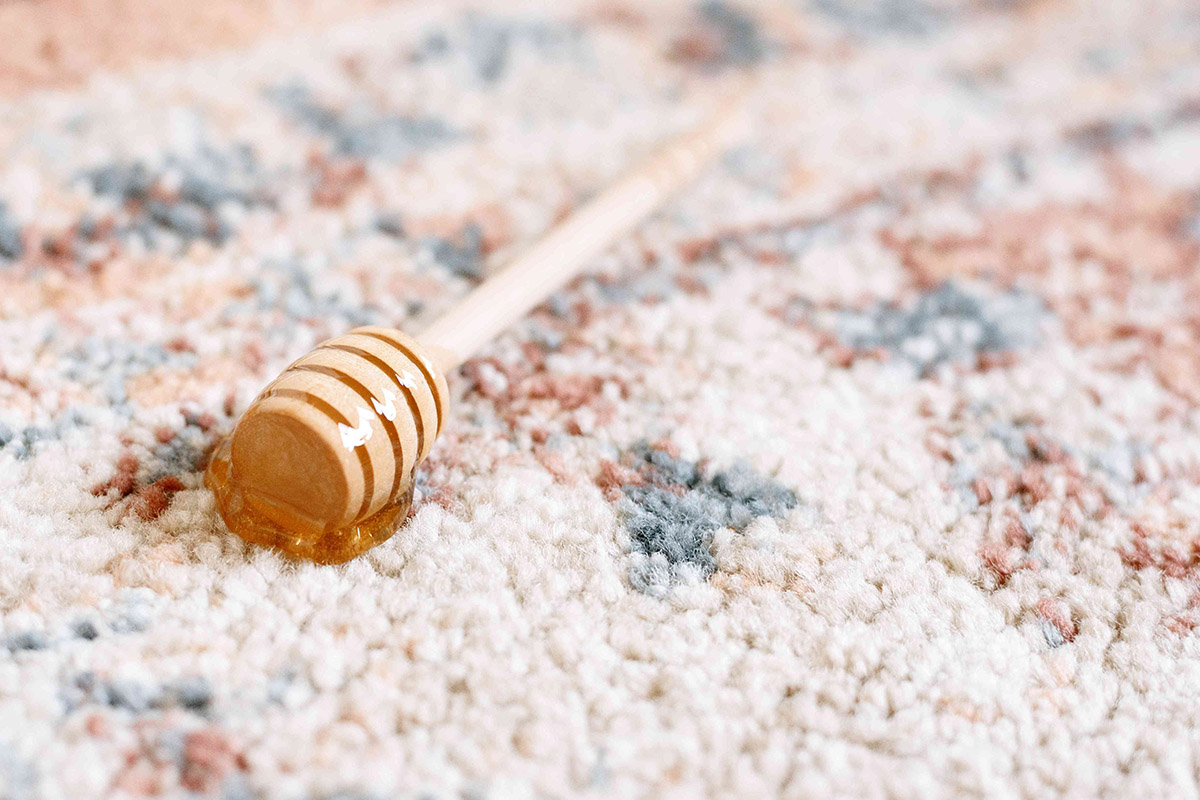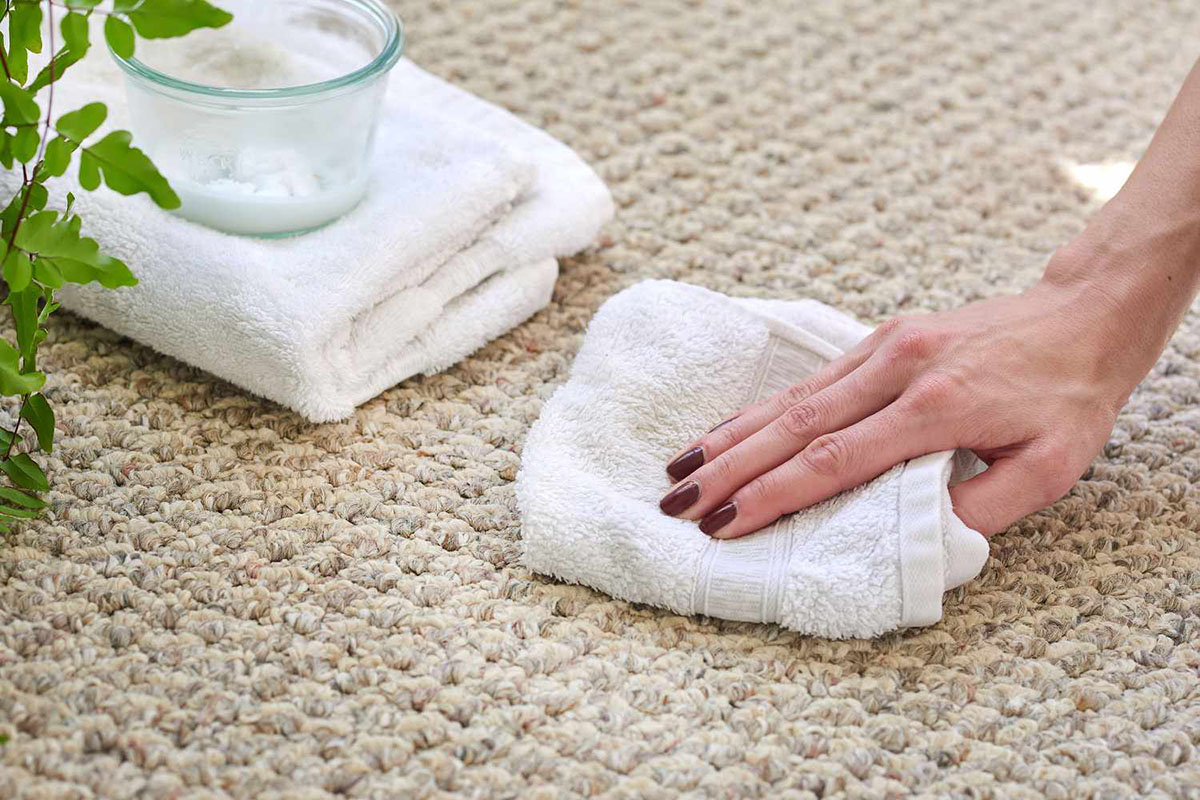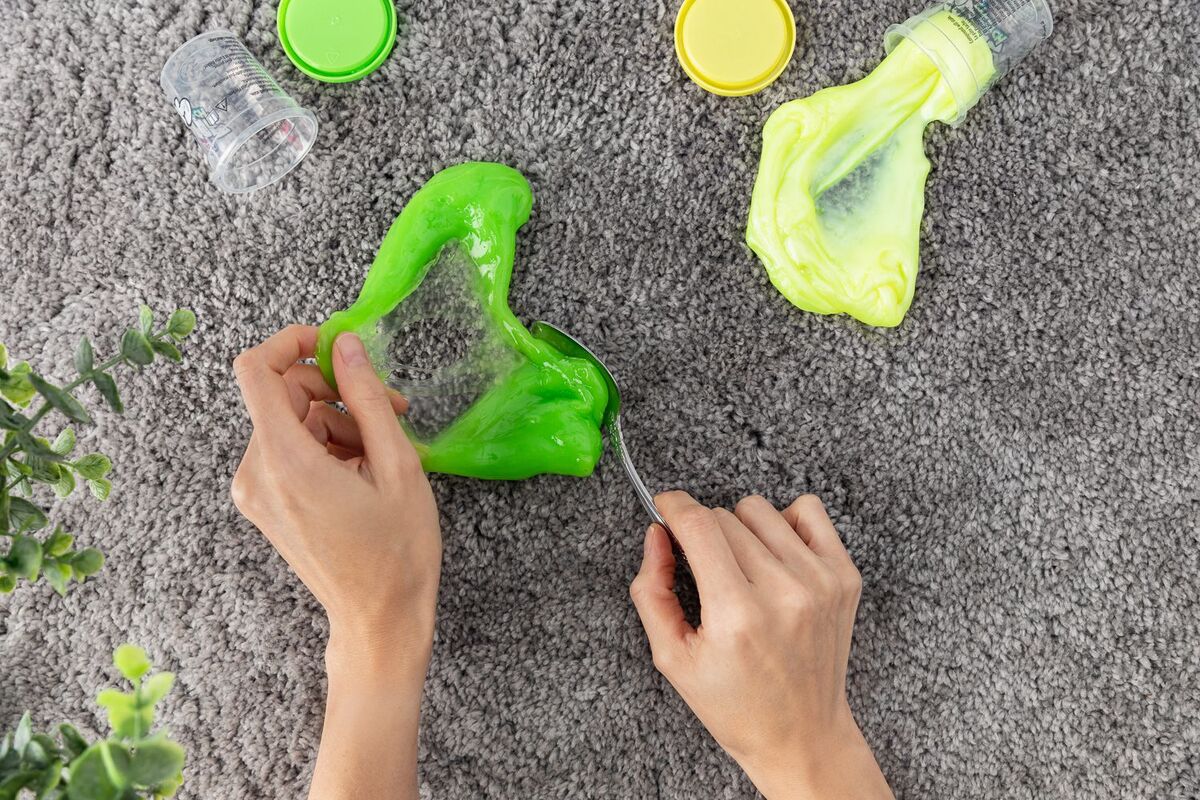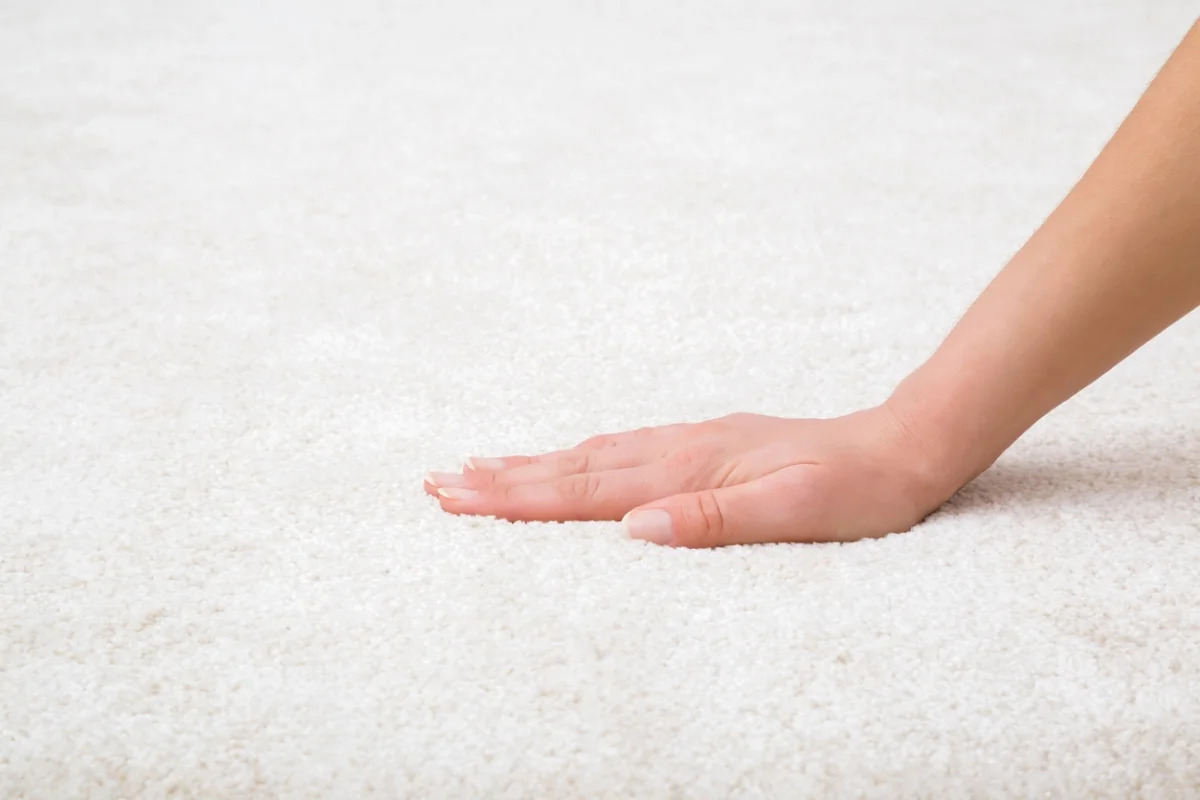

Articles
How To Get Carpet White Again
Modified: October 21, 2024
Discover effective articles on how to restore your carpet's whiteness and bring back its original beauty.
(Many of the links in this article redirect to a specific reviewed product. Your purchase of these products through affiliate links helps to generate commission for Storables.com, at no extra cost. Learn more)
Introduction
Welcome to our comprehensive guide on how to get your carpet white again. Over time, carpets can accumulate dirt, stains, and discolorations, making them appear dull and unattractive. Luckily, there are several methods and techniques you can employ to restore the pristine whiteness of your carpet.
Having a clean and bright carpet not only enhances the overall aesthetic appeal of your home but also creates a healthier living environment by eliminating allergens and pollutants. So, whether your carpet has experienced spills, pet accidents, or general wear and tear, this article will provide you with the insights and solutions you need to revive its original loveliness.
In this guide, we will cover everything you need to know about tackling carpet stains, choosing the right cleaning products, and implementing effective cleaning methods. We will also explore natural home remedies for stubborn stains and offer advice on preventing future stains and maintaining the cleanliness of your carpet.
Each section of this article is designed to provide you with step-by-step instructions and tips for successfully restoring your carpet’s whiteness. By following these techniques, you can save money on professional cleaning services and ensure that your carpet remains beautiful for years to come.
Before we dive into the cleaning methods, it is important to understand the different types of carpet stains and their causes. By identifying the specific stain you are dealing with, you can use the correct cleaning technique and eliminate the stain effectively without causing any damage to the carpet fibers.
So, let’s begin our journey towards getting your carpet white again.
Key Takeaways:
- Understanding the nature of different stains and preparing your carpet properly are crucial steps in effectively restoring its whiteness. By using the right cleaning methods and products, you can conquer stains and revitalize your carpet’s appearance.
- Consistent care, proactive measures, and prompt action against spills and odors are essential for maintaining the beauty of your white carpet. By incorporating regular cleaning routines and protective strategies, you can ensure that your carpet remains fresh, clean, and vibrant for years to come.
Read more: How To Get Bathtub White Again
Understanding Carpet Stains
Before you start the process of removing stains from your carpet, it’s important to have a basic understanding of different types of stains and their causes. This knowledge will help you choose the most effective cleaning method and products for treating specific stains.
1. Food and Beverage Stains: These stains are some of the most common and can occur from spills of coffee, wine, juice, sauces, and other food items. They can leave behind unsightly marks and discolorations on your carpet.
2. Pet Stains: If you have furry friends at home, you might deal with pet stains, including urine, vomit, and feces. These stains not only look and smell unpleasant but can also be challenging to remove if not treated promptly.
3. Mud and Dirt Stains: Tracking in mud or dirt from outdoors is inevitable, especially in high-traffic areas. These stains can leave brown or dark spots on your carpet, making it look dirty and unkempt.
4. Ink Stains: Accidental ink spills can create stubborn stains on carpets. Whether it’s a leaking pen or a marker mishap, ink stains require immediate attention to prevent them from spreading and becoming permanent.
5. Grease and Oil Stains: Greasy or oily substances like cooking oil or cosmetics can easily find their way to your carpet. These stains tend to attract dirt and can be quite stubborn to remove.
6. Red Wine Stains: Red wine stains are notoriously difficult to remove and can leave a deep, dark mark on your carpet. Immediate action is required to prevent the stain from setting in and becoming permanent.
7. Chemical Stains: Certain chemicals and cleaning products can accidentally spill onto your carpet, leaving behind tough stains. These stains often require specialized cleaning techniques to ensure complete removal.
Understanding the nature of different stains will help you determine the appropriate cleaning method and product to use. It’s important to act quickly when dealing with stains to prevent them from setting into the carpet fibers and becoming more challenging to remove.
In the next section, we will discuss how to prepare your carpet for cleaning, ensuring that you achieve the best possible results in your quest to regain the whiteness of your carpet.
Preparing the Carpet for Cleaning
Before diving into the process of cleaning your carpet and removing stains, it’s essential to properly prepare the carpet to achieve the best possible results. Preparing the carpet involves a few simple steps that will help maximize the effectiveness of the cleaning process.
1. Remove Furniture: Start by removing any furniture or objects from the carpeted area. This will give you clear access to the entire carpet, allowing you to clean it thoroughly without any obstructions. If moving heavy furniture isn’t possible, at least shift it slightly to reach the areas around and underneath.
2. Vacuum Thoroughly: Next, vacuum the entire carpet to remove loose dirt, dust, and debris. Use a vacuum cleaner with a powerful suction to ensure deep cleaning. Pay extra attention to corners, edges, and areas with heavy foot traffic, as these tend to accumulate more dirt.
3. Pre-Treat Stains: Identify any specific stains or heavily soiled areas on the carpet. Apply a pre-treatment solution or stain remover to these spots, following the instructions provided by the manufacturer. Allow the pre-treatment to sit for the recommended time to break down the stains and loosen them from the carpet fibers.
4. Test Cleaning Products: If you’re using a new cleaning product on your carpet, it’s a good practice to test it on a small, inconspicuous area first. Apply a small amount of the cleaning solution and blot it with a clean cloth. Check for any adverse reactions like discoloration or damage to the carpet fibers. If the test area shows no negative effects, you can proceed with confidence.
5. Check the Carpet’s Colorfastness: Some carpets may be prone to color fading or bleeding when exposed to certain cleaning solutions. To prevent damage, check the carpet’s colorfastness in an inconspicuous area. Dampen a clean white cloth with the cleaning solution and gently blot the test area. If the carpet’s color transfers onto the cloth, it’s best to avoid using that particular cleaning product.
Preparing your carpet before cleaning is crucial in ensuring that the cleaning process is effective and safe for your carpet fibers. By removing furniture, vacuuming thoroughly, pre-treating stains, and testing cleaning products, you set yourself up for success in getting your carpet white again.
In the next section, we will discuss the importance of vacuuming your carpet and how to do it correctly.
Vacuuming the Carpet
Vacuuming is an essential step in maintaining the cleanliness and longevity of your carpet. Regular vacuuming helps to remove surface dirt, dust, and allergens, making your carpet look fresh and extending its lifespan. Here are some tips to ensure effective vacuuming:
1. Choose the Right Vacuum Cleaner: Selecting the right vacuum cleaner for your carpet is crucial. Look for a vacuum with adjustable height settings to accommodate different carpet pile depths. For thick, plush carpets, a vacuum with a rotating brush or beater bar can help agitate and lift embedded dirt more effectively.
2. Clear the Area: Before you start vacuuming, make sure the area is clear of any small objects, such as toys, coins, or paper clips, which could clog the vacuum or cause damage to the carpet or the machine.
3. Empty and Clean the Vacuum: Empty the vacuum bag or canister and clean or replace the filters regularly to maintain optimal suction power. A clean vacuum ensures effective dirt pick-up and prevents any debris from being released back onto the carpet.
4. Focus on High-Traffic Areas: Pay extra attention to areas of the carpet that receive the most foot traffic, such as entryways, hallways, and living rooms. These areas tend to accumulate more dirt and require more thorough vacuuming.
5. Vacuum in Multiple Directions: To ensure thorough cleaning, vacuum the carpet in multiple directions, especially in high-traffic areas. This helps to lift dirt from different angles and maximizes the removal of embedded debris.
6. Use Attachments and Accessories: Utilize the different attachments and accessories that come with your vacuum cleaner to clean hard-to-reach areas, corners, edges, and upholstery. These attachments are designed to provide more precision and efficient cleaning.
7. Regular Vacuuming Frequency: The frequency of vacuuming depends on factors such as household traffic, presence of pets, and personal preferences. As a general guideline, high-traffic areas should be vacuumed at least once a week, while less frequented areas may require vacuuming every two weeks.
Vacuuming your carpet on a regular basis is an effective way to maintain its cleanliness and prevent dirt from embedding into the fibers. It also reduces allergens and improves indoor air quality. By following these tips and incorporating vacuuming into your cleaning routine, you are taking a significant step towards getting your carpet white again.
In the next section, we will explore the use of carpet stain removers and how they can assist in restoring the whiteness of your carpet.
Using Carpet Stain Removers
Carpet stain removers are specially formulated products designed to target and remove stubborn stains from your carpet fibers. When used correctly, these stain removers can be highly effective in restoring the whiteness of your carpet. Here are some steps to follow when using carpet stain removers:
1. Identify the Stain: Before applying a carpet stain remover, identify the type of stain you’re dealing with. Different stains may require different cleaning methods and products. Refer to the manufacturer’s instructions or consult a stain guide to ensure you’re using the appropriate stain remover for the specific stain.
2. Test in an Inconspicuous Area: Before applying the stain remover to the stained area, test it in a small, inconspicuous area to ensure it doesn’t cause any discoloration or damage to your carpet fibers. Apply a small amount of the product and blot it away with a clean white cloth. If there are no adverse effects, you can proceed with confidence.
3. Follow the Instructions: Read and follow the instructions provided by the manufacturer carefully. Different carpet stain removers may have varying application methods and dwell times. It’s important to adhere to these instructions to achieve the best results.
4. Blot, Don’t Rub: When applying the stain remover, avoid rubbing the stain vigorously. Instead, use a clean white cloth or sponge to gently blot the stain. Rubbing can push the stain deeper into the carpet fibers or cause it to spread, making it more challenging to remove.
5. Work from the Outside In: When treating a stain, start from the outer edges of the stain and work your way towards the center. This prevents the stain from spreading further and helps contain the affected area.
6. Extraction or Blotting: Depending on the type of stain remover you’re using, it may require extraction or blotting after application. Extraction involves using a wet vacuum or carpet cleaning machine to remove the stain remover and any loosened dirt. Blotting involves blotting the treated area with a clean, damp cloth to remove the stain remover residue and any remaining stain.
7. Repeat if Necessary: Stubborn or older stains may require multiple applications of the stain remover. Follow the instructions and repeat the process if needed, allowing the recommended dwell time between applications.
Remember, it’s important to act quickly when treating stains to prevent them from setting in. The sooner you treat a stain, the higher the chance of complete removal. If you’re unsure about using carpet stain removers or dealing with tough stains, it’s always recommended to consult a professional carpet cleaning service for assistance.
In the next section, we will explore the popular method of steam cleaning and how it can help restore the whiteness of your carpet.
Read more: How To Get A Toilet Seat White Again
Steam Cleaning the Carpet
Steam cleaning, also known as hot water extraction, is a highly effective method for deep cleaning carpets and removing dirt, stains, and allergens. This method utilizes hot water and a specialized machine to penetrate deep into the carpet fibers, loosening dirt and debris. Here’s how you can use steam cleaning to get your carpet white again:
1. Preparation: Before steam cleaning, vacuum the carpet thoroughly to remove surface dirt and debris. This helps prevent any loose dirt from becoming mud when it mixes with the hot water during steam cleaning. Also, make sure to address any specific stains or heavily soiled areas with appropriate stain removers or pre-treatment solutions.
2. Choose the Right Steam Cleaner: Select a high-quality steam cleaner with adjustable temperature and pressure settings. Look for a machine that allows you to control the heat and pressure based on the specific needs of your carpet.
3. Follow Manufacturer’s Instructions: Read and follow the instructions provided by the manufacturer of the steam cleaner. Each machine may have specific guidelines regarding water fill level, cleaning solution usage, and operation techniques. Adhering to these instructions ensures safe and effective cleaning.
4. Prepare the Cleaning Solution: Most steam cleaners require a cleaning solution to be mixed with hot water. Use a carpet-friendly cleaning solution recommended by the manufacturer. Be sure to follow the recommended dilution ratio for optimal results.
5. Start Cleaning: Begin by starting in a corner of the room and working your way systematically across the carpet. Slowly push the steam cleaner forward, allowing the hot water and cleaning solution to saturate the carpet. Pull the machine back slowly, extracting the dirty water along with the loosened dirt and stains. Repeat this process for the entire carpeted area.
6. Pay Attention to Stubborn Stains: For stubborn stains, you can focus the steam cleaner on the specific area or use additional cleaning solution to treat the stain. Agitate the stain gently with a brush or cloth and then extract the dirt and cleaning solution with the steam cleaner.
7. Drying Time: Allow the carpet to dry completely before walking on it or placing furniture back. Open windows or use fans to facilitate faster drying. Avoid direct sunlight, as it may cause the carpet to fade or discolor.
Steam cleaning is an effective method for deep cleaning your carpet and restoring its whiteness. However, it’s important to follow all safety precautions and use the steam cleaner as directed to prevent any damage to your carpet fibers or equipment. If you’re unsure or have heavily soiled carpets, it’s best to consult professional carpet cleaners for expert assistance.
In the next section, we will explore natural remedies that can be used to remove stains and restore the whiteness of your carpet without the use of harsh chemicals.
To get carpet white again, mix equal parts water and white vinegar in a spray bottle. Spray the stained area, let it sit for a few minutes, then blot with a clean cloth. Repeat as needed.
Using Natural Remedies for Stains
If you prefer to avoid harsh chemicals or want to explore more eco-friendly options for removing stains from your carpet, natural remedies can be a great alternative. Here are some commonly used natural ingredients and methods that can help you tackle stains and restore the whiteness of your carpet:
1. Baking Soda: Baking soda is a versatile and effective natural cleaner. Sprinkle baking soda generously over the stained area and let it sit for at least 30 minutes. Then, vacuum up the baking soda along with the loosened dirt and stains. Baking soda helps absorb odors and can lighten certain types of stains.
2. Vinegar: White vinegar is another powerful natural cleaner that can be used on various types of stains. Mix equal parts of white vinegar and water and apply the solution to the stain using a spray bottle or a clean cloth. Blot with a clean cloth to lift the stain. Vinegar helps break down stains and disinfects the carpet fibers.
3. Lemon Juice: Lemon juice, with its natural acidity, can be effective in removing certain types of stains and brightening the carpet. Squeeze fresh lemon juice onto the stain and let it sit for a few minutes. Blot with a clean cloth and repeat if necessary. Be cautious when using lemon juice on light-colored carpets, as it may cause discoloration.
4. Hydrogen Peroxide: Hydrogen peroxide can be used to remove tough stains like blood or red wine. It acts as a mild bleaching agent, so it’s important to test it on a small, inconspicuous area of the carpet first. Apply a small amount of hydrogen peroxide to the stain, let it sit for a few minutes, and then blot with a clean cloth.
5. Salt: Salt can be used to absorb fresh liquid spills before they set into the carpet. Immediately after the spill occurs, blot up as much liquid as possible using a clean cloth. Then, generously sprinkle salt over the damp area. The salt will absorb the liquid, making cleanup easier later. Vacuum up the salt once it has absorbed the moisture.
6. Cornstarch: Cornstarch can be used to soak up greasy or oily stains. Sprinkle cornstarch over the stain and let it sit for a few hours or overnight. The cornstarch will help absorb the oil. Vacuum up the cornstarch, and if necessary, follow up with a gentle cleaning solution for any remaining residue.
Remember, natural remedies may not be suitable for all types of stains and carpets. Always spot test a small area first to ensure compatibility and avoid any potential damage. Additionally, tackle stains as soon as possible for better results.
In the next section, we will discuss specific methods for treating common types of stains, such as food and beverage stains, pet stains, and more.
Treating Specific Types of Stains
When it comes to removing stains from your carpet, it’s important to treat each type of stain differently. The following methods can help you effectively treat specific types of stains and restore the whiteness of your carpet:
1. Food and Beverage Stains: For food and beverage stains, start by blotting up any excess liquid using a clean cloth. Mix a solution of mild dish soap and warm water. Apply the solution to the stain and gently blot with a cloth. Repeat the process until the stain is lifted. For stubborn stains, try using a mixture of white vinegar and water or a commercial enzymatic cleaner.
2. Pet Stains: When dealing with pet stains like urine or vomit, it’s important to act quickly. Blot up the liquid with paper towels or a clean cloth. Rinse the area with cold water, and then blot again. Mix a solution of equal parts white vinegar and water and apply it to the stain. Blot with a cloth to remove the stain and odor. Follow up with an enzymatic cleaner designed specifically for pet stains, following the manufacturer’s instructions.
3. Mud and Dirt Stains: Allow mud and dirt stains to dry completely. Once dry, vacuum up as much dirt as possible. Mix a solution of mild dish soap and warm water. Apply the solution to the stain and blot gently. Rinse with clean water and blot again. Repeat the process until the stain is gone.
4. Ink Stains: Ink stains can be challenging to remove. Blot the stain with a clean cloth to absorb as much ink as possible. Avoid rubbing, as it can cause the ink to spread. Apply rubbing alcohol to a clean cloth and gently blot the stain. Blot with a clean cloth dipped in cold water to rinse. For stubborn ink stains, consider using a specialized ink stain remover or consult a professional cleaner.
5. Grease and Oil Stains: Blot up any excess grease or oil with a clean cloth. Sprinkle baking soda or cornstarch over the stain and let it sit for at least 15 minutes. Vacuum up the powder. Apply a small amount of dish soap mixed with warm water to the stain and blot gently. Rinse with clean water and blot again until the stain is removed.
6. Red Wine Stains: Act quickly when it comes to red wine stains. Blot up as much wine as possible with a clean cloth. Mix a solution of equal parts hydrogen peroxide and dish soap. Apply the solution to the stain and gently blot. Rinse with clean water and blot again. If the stain persists, consider using a commercial red wine stain remover.
Remember to always blot stains gently rather than rubbing, as rubbing can cause the stain to spread or push it deeper into the carpet fibers. It’s also recommended to test any cleaning solution on an inconspicuous area of the carpet before applying it to the stain.
In the next section, we will discuss how to eliminate odors from your carpet and keep it smelling fresh.
Removing Odors from the Carpet
Unpleasant odors can linger in your carpet and make your home feel less inviting. Luckily, there are several methods you can employ to eliminate odors and keep your carpet smelling fresh. Here are some effective ways to remove odors from your carpet:
1. Baking Soda: Baking soda is a powerful natural deodorizer that can help absorb odors from your carpet. Sprinkle a generous amount of baking soda over the carpet, focusing on areas that are particularly odorous. Let it sit for a few hours or overnight to allow the baking soda to absorb the odors. Vacuum the baking soda thoroughly, and you’ll notice a significant improvement in the freshness of your carpet.
2. Vinegar Solution: Vinegar is another effective natural deodorizer. Mix equal parts of water and white vinegar in a spray bottle. Lightly mist the carpet with the vinegar solution, ensuring not to saturate it. Allow the carpet to air dry, and the vinegar smell will dissipate, taking any unpleasant odors with it.
3. Enzymatic Cleaners: Enzymatic cleaners contain special enzymes that break down organic matter, such as pet urine or food spills, which can cause lingering odors. Follow the manufacturer’s instructions for the specific enzymatic cleaner you’re using. Thoroughly apply the cleaner to the affected area and allow it to dry naturally. These cleaners target the odor-causing bacteria and eliminate the source of the smell.
4. Baking Soda and Essential Oils: Create a homemade carpet freshener by combining baking soda with a few drops of your favorite essential oil. Mix well and sprinkle the mixture over your carpet. Let it sit for some time to allow the baking soda to absorb odors, and the essential oil will leave a pleasant scent behind. Vacuum the carpet thoroughly to remove both the baking soda and the odors.
5. Steam Cleaning: Steam cleaning not only helps remove dirt and stains but also eliminates odors trapped deep within the carpet fibers. The hot water and steam can effectively kill bacteria and deodorize the carpet. If your carpet has stubborn odors, consider using a steam cleaner with a built-in odor-neutralizing solution for an extra boost of freshness.
6. Proper Ventilation: Open windows and doors to promote airflow and ventilation in the room. Fresh air helps to reduce odors and keep the carpet smelling clean. Use fans or air purifiers to improve air circulation, especially in areas with poor ventilation.
It’s important to remember that certain odors may require multiple treatments or professional assistance if they persist. Additionally, incorporating regular vacuuming and prompt cleaning of spills can help prevent odors from developing in the first place.
In the next section, we will discuss how to protect and maintain a white carpet, ensuring its long-lasting beauty.
Read more: How To Get My Toilet Bowl White Again
Protecting and Maintaining a White Carpet
To keep your white carpet looking pristine and vibrant, it’s essential to take proactive measures in protecting and maintaining its beauty. Here are some tips to help you protect and care for your white carpet:
1. Preventative Measures: Place doormats at all entrances to trap dirt and debris before it reaches the carpet. Encourage family members and guests to remove their shoes before stepping on the carpet. Additionally, consider using carpet runners or rugs in high-traffic areas to minimize wear and tear.
2. Regular Vacuuming: Vacuum your white carpet at least once a week, if not more frequently, to remove surface dirt, dust, and allergens. Pay special attention to high-traffic areas and take extra care when vacuuming delicate white carpet fibers.
3. Quick Spill Clean-up: Address spills and stains immediately to prevent them from setting into the carpet fibers. Blot up any liquid spills with a clean cloth or paper towel, working from the outer edge towards the center. Avoid rubbing the stain, as it can cause it to spread or embed it deeper into the carpet.
4. Use Stain Guards: Consider applying a carpet stain guard or protector to your white carpet. These products create a barrier that repels stains and makes cleaning up spills easier. Follow the manufacturer’s instructions for application and reapply as necessary.
5. Professional Cleaning: Schedule professional carpet cleaning at least once or twice a year. Professional cleaners have the expertise and specialized equipment to deep clean and refresh your white carpet, removing embedded dirt and stains that regular vacuuming might miss.
6. Regular Rotation of Furniture: Move your furniture and accessories periodically to prevent uneven wear on your white carpet. Regular rotation helps distribute the weight and foot traffic, ensuring that the carpet wears evenly.
7. Spot Cleaning: Keep a carpet spot cleaner on hand for quick and easy spot treatment of stains. Follow the directions on the spot cleaner and test it on an inconspicuous area first to check for any adverse effects on the carpet color or fibers.
8. Professional Assistance: If you encounter stubborn stains, discoloration, or other carpet issues that you are unable to resolve on your own, don’t hesitate to seek professional assistance. Carpet cleaning professionals have the expertise and tools to tackle even the most challenging carpet problems effectively.
By implementing these preventative measures and following a regular cleaning routine, you can keep your white carpet looking beautiful and extend its lifespan. Remember, consistent care and maintenance are key to preserving the pristine white appearance of your carpet for years to come.
Final Thoughts
Getting your carpet white again requires a combination of proper cleaning techniques, effective stain removal methods, and ongoing maintenance. By understanding the different types of stains, preparing your carpet properly, using suitable stain removers, and incorporating natural remedies, you can effectively conquer stains and restore the whiteness of your carpet. Remember to treat specific stains with the appropriate cleaning techniques, remove odors using natural remedies, and take proactive measures to protect and maintain the beauty of your white carpet. With dedication and regular care, your carpet will remain fresh, clean, and beautiful for years to come.
We hope this comprehensive guide has provided you with valuable insights and practical tips to assist you in your journey to get your carpet white again. Enjoy the process of transforming your carpet and revel in the refreshed and vibrant look it brings to your living space.
Conclusion
In conclusion, restoring the whiteness of your carpet is a achievable goal with the right knowledge, methods, and techniques. By understanding the different types of stains, preparing your carpet properly, using effective stain removers, and incorporating natural remedies, you can tackle stains head-on and bring back the pristine look of your carpet.
Vacuuming regularly, using the appropriate cleaning products, and treating spills promptly are essential for maintaining the cleanliness and beauty of your white carpet. Additionally, utilizing preventative measures such as doormats, carpet runners, and stain guards can help protect your carpet from dirt, stains, and wear.
When it comes to stain removal, it’s important to act quickly and choose the right cleaning method for the specific type of stain you’re dealing with. Whether you use commercial stain removers, natural remedies like baking soda and vinegar, or enlist professional help, taking immediate action is key to effectively removing stains and restoring the whiteness of your carpet.
Furthermore, maintaining a fresh and odor-free carpet involves regular vacuuming, steam cleaning, and the use of natural deodorizers such as baking soda and vinegar. By following these practices, you can eliminate odors and keep your white carpet smelling clean and inviting.
Remember, protecting and maintaining a white carpet requires ongoing care and attention. Regular rotation of furniture, spot cleaning, professional carpet cleaning, and taking prompt action against stains and spills are vital to keeping your carpet in pristine condition for years to come.
By following the comprehensive guide outlined in this article, you have the knowledge and tools to revitalize your white carpet and restore its radiant appearance. Enjoy the process, take pride in the transformation, and relish the refreshed and vibrant atmosphere it brings to your home.
So, roll up your sleeves, gather your cleaning supplies, and embark upon the journey of getting your carpet white again. With determination, patience, and the right techniques, you can achieve remarkable results and enjoy the beauty of your white carpet for years to come.
Frequently Asked Questions about How To Get Carpet White Again
Was this page helpful?
At Storables.com, we guarantee accurate and reliable information. Our content, validated by Expert Board Contributors, is crafted following stringent Editorial Policies. We're committed to providing you with well-researched, expert-backed insights for all your informational needs.
